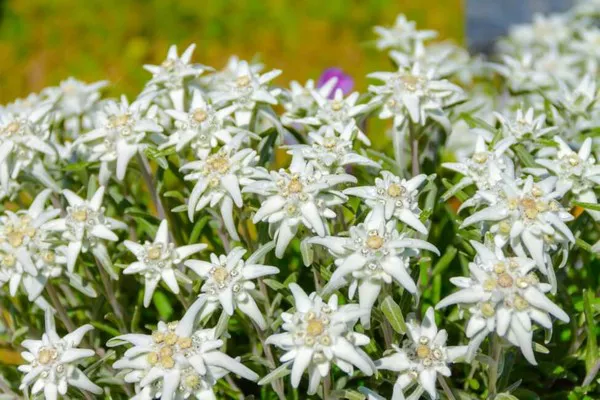Corn is a staple crop enjoyed by millions worldwide, but its widespread cultivation also makes it vulnerable to various pests that can devastate yields. Protecting corn from pests is essential for ensuring a successful harvest and providing food security. In this comprehensive article, we will explore the most common pests that target corn, identify signs of infestation, and discuss a range of effective strategies to safeguard your corn crops from these intruders. By implementing these measures, you can cultivate healthy and robust corn plants with confidence.
1. Identifying Common Pests that Target Corn
Understanding the pests that are most likely to attack corn is the first step in developing a comprehensive pest management plan. The following are some of the most common pests that pose a threat to corn crops:
Corn Earworm: The corn earworm is a voracious caterpillar that feeds on the kernels within the ear, causing significant yield loss and quality reduction.
Fall Armyworm: These pests can cause rapid and severe damage to corn by devouring leaves, tassels, and developing ears.
Corn Borers: European corn borers and southwestern corn borers tunnel into corn stalks and ears, weakening the plant’s structural integrity and reducing yield.
Aphids: These small insects suck sap from corn plants, causing stunted growth and transmitting viral diseases.
Wireworms: The larvae of click beetles, wireworms feed on corn seeds and roots, leading to poor germination and plant establishment.
2. Implementing Preventive Measures
Preventing pest infestations is often more effective and sustainable than dealing with an established problem. Here are some preventive measures to protect your corn crops:
Crop Rotation: Rotate corn crops with non-host plants to disrupt the life cycle of pests that target corn and reduce their population.
Resistant Varieties: Choose corn varieties bred for pest resistance, which can withstand attacks from specific pests.
Early Planting: Planting corn early in the growing season can help crops establish before peak pest populations emerge.
Weed Control: Remove weeds from the field to reduce hiding places and breeding sites for pests.
Clean Cultivation: Practice clean cultivation to remove crop debris and reduce overwintering sites for pests.
3. Monitoring and Early Detection
Regular monitoring is crucial to detect pest infestations before they escalate. Here are some monitoring techniques to adopt:
Phenological Monitoring: Observe the corn crop’s development stages to predict when specific pests are likely to attack.
Visual Inspection: Regularly inspect corn plants for signs of damage, including chewed leaves, wilting, or discolored foliage.
Trapping: Set up pheromone traps to capture and monitor the activity of pests such as corn earworms or corn borers.
Scouting: Conduct systematic field scouting to assess pest populations and identify problem areas.
4. Natural Pest Control
Utilizing natural enemies of pests can be an effective and eco-friendly way to manage pest populations. Consider the following natural pest control strategies:
Beneficial Insects: Encourage the presence of natural predators, such as ladybugs, lacewings, and parasitic wasps, which feed on pest insects.
Biological Pesticides: Use biopesticides, which are derived from natural sources like bacteria or fungi, to target specific pests without harming beneficial insects.
5. Chemical Pest Control
When pest populations reach damaging levels, chemical control may be necessary. However, it’s essential to use pesticides responsibly and judiciously. Follow these guidelines for safe and effective chemical pest control:
Selective Pesticides: Choose pesticides that target specific pests rather than broad-spectrum chemicals to minimize harm to beneficial organisms.
Timing: Apply pesticides during the pest’s vulnerable stage to maximize effectiveness and reduce the need for repeated applications.
Follow Instructions: Always read and follow the label instructions when using pesticides to ensure safe application and compliance with regulations.
Rotation: Rotate between different classes of pesticides to prevent the development of pesticide-resistant pest populations.
6. Trap Cropping
Trap cropping involves planting a sacrificial crop nearby to lure pests away from the main crop. For example, planting sweet corn as a trap crop for corn earworms can draw the pests away from the field and reduce damage to the primary corn crop.
7. Physical Barriers
Physical barriers can provide effective protection against pests. Consider using the following methods:
Row Covers: Row covers made of lightweight fabric can be placed over corn plants to exclude pests while allowing sunlight and rain to penetrate.
Collars: Use collars made of cardboard or plastic around the base of young corn plants to deter cutworms and other soil-dwelling pests.
8. Integrated Pest Management (IPM)
Implementing an Integrated Pest Management approach combines multiple strategies to minimize pest damage while promoting ecological balance. IPM involves regular monitoring, using a combination of preventive measures, natural controls, and judicious chemical interventions when necessary.
Conclusion
Protecting corn from pests is essential to ensure a bountiful harvest and food security. By understanding the common pests that target corn, adopting preventive measures, monitoring the crop regularly, and using natural and chemical controls judiciously, farmers and gardeners can effectively manage pest populations. Integrated Pest Management offers a holistic and sustainable approach to strike a balance between controlling pests and preserving the environment. By employing these strategies, you can safeguard your corn crops, ensuring they grow robust and healthy to yield delicious and abundant harvests.


